While summer is the overwhelmingly popular season to venture into Rocky Mountain National Park (RMNP), a shoulder season trip brings its own type of perfection.
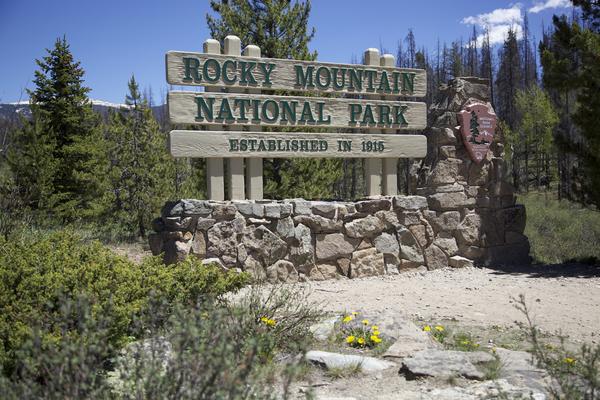
Imagine towering peaks blanketed in pristine snow, cascading waterfalls at every turn, and a landscape bursting with wildflowers – it’s truly a sight to behold! The park’s beauty is undeniably magnified during these months, making it an ideal time for nature lovers to explore.
One of the perks of a spring visit is the reduced crowds. As most people plan their visits during the summer, choosing to venture in the spring allows you to enjoy the park’s wonders without the usual throng of tourists. This means less noise, less waiting, and more opportunities to connect with nature on a deeper level.
This is your guide to traveling to one of the nation’s greatest green spaces in the spring.
What to Know Before You Go
Spring Weather in Rocky National Park
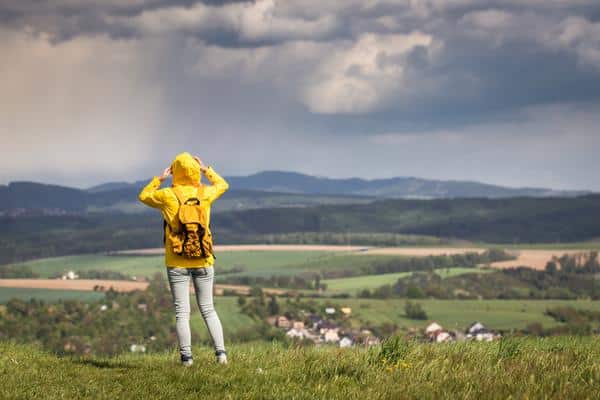
The weather in RMNP can vary drastically at any time of year, but especially during the spring when winter still lingers at higher elevations. By late May, the park’s lower elevations should give way to crisp spring conditions, perfect for hiking, but that doesn’t mean snowfall is impossible!
Come prepared for “snow or shine” weather because you can be hiking through the wildflowers one day and then enjoying a whimsical snowstorm the next. While a rain jacket should always be on the packing list for an outdoor adventure, the rain is typically light compared to the summer months when it comes on heavier.
Road Conditions
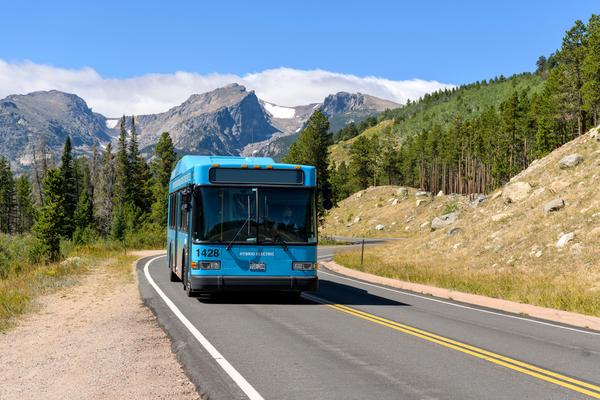
With winter conditions still dominating portions of the park into early spring, it is extremely important that you check the park’s road conditions and alerts to plan your trip properly.
The iconic scenic drive up Trail Ridge Road is closed throughout the winter and at an elevation of 12,183 feet that bleeds late into spring proper (The same is true for the Old Fall River Road). But fear not! While chances are Trail Ridge Road will be closed for your spring visit, the famous Bear Lake Corridor will be in full swing, and it’s one of the few times that you can have it all to yourself.
Regardless of your plans, the weather in RMNP can change at the drop of a hat, so it’s never a bad idea to swing by a visitor center to get the most up-to-date report from a ranger.
Spring Activities in RMNP
Even with portions of the park still closed for winter conditions, there are plenty of things to do, and many of them you can’t experience anytime else!
Chase Waterfalls
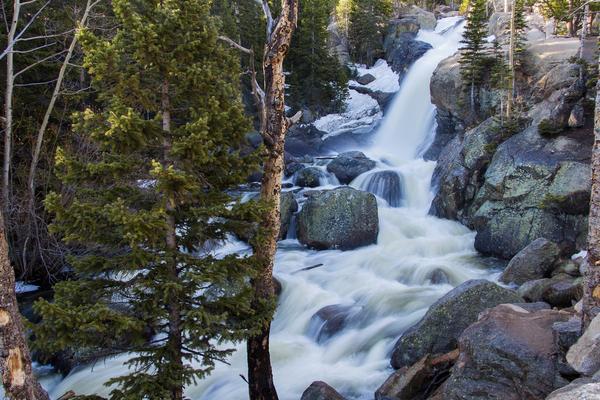
One of the absolute best activities is chasing waterfalls! Thanks to springtime snowmelt, waterfalls that draw thousands in during the summer months are only that much more impressive. Increased water flow leads to dramatic, thundering falls unlike anything you have ever experienced before. Go for a short hike and get up close and personal with the power of nature!
Alberta Falls
- Length: 1.6 miles
- Elevation: 226 feet
- Trail Map: https://www.alltrails.com/trail/us/colorado/alberta-falls-trail
A fan-favorite all year round, if you only have time to visit one waterfall in RMNP it should be this one! Thundering down 30 feet amongst a narrow gorge, you’ll hear this roaring beast long before you even see it!
Ouzel Falls
- Length: 5.3 miles
- Elevation: 984 feet
- Trail Map: https://www.alltrails.com/trail/us/colorado/ouzel-falls-via-wild-basin-trail-from-sandbeach-lake
Tucked away in the Wild Basin district of the park, Ouzel Falls is a great choice for someone who wants to work for their epic view. Beating Albertall Falls at a whopping 40 feet, there is no question as to whether or not this hike is worth the effort!
Adams Falls
- Length: 0.8 miles
- Elevation: 104 feet
- Trail Map: https://www.alltrails.com/trail/us/colorado/adams-falls-trail
Located on the west side of the park, Adams Falls is a must if you find yourself in the town of Grand Lake. Starting at the edge of the lake, you are rewarded with incredible views before you even hit the trail. The 55-foot cascading waterfall is really just the icing on the cake!
Gush Over Nature’s Spring Babies
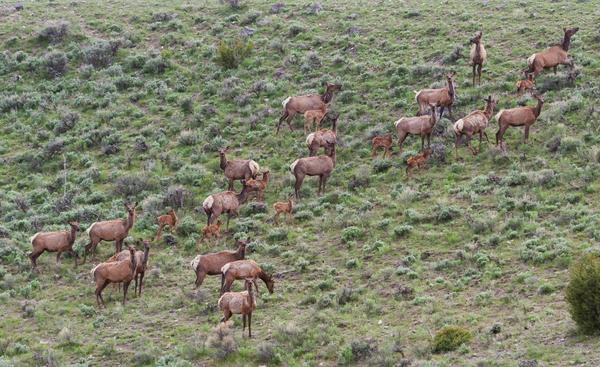
Wildlife viewing is already one of the most exciting things you can do when visiting a national park. A springtime visit can take that experience to a whole new level! Not only are your chances of spotting wildlife much higher as animals become more active, but now they are sporting little babies! Spring welcomes new life, and every animal, from the black bear to the mule deer, can be spotted grazing with their adorable new editions.
You won’t have to look hard to find these mamas teaching their new kiddos the ropes, but there are a couple of fool-proof places for a perfect afternoon of wildlife watching.
Moraine Park
This is the absolute best place to see giant herds of elk and, of course, their calves! Keep in mind that mothers are extremely protective of their young, so you will want to keep your distance. Don’t underestimate the power (or speed) of an elk!
You can also find other wildlife like mule deer, coyotes, and occasionally black bears navigating throughout the valley.
Horseshoe Park
Similar to Moraine Park, it is not uncommon to see elk here, but the show’s real stars are the big horn sheep and their lambs! The willow-filled meadow also makes this a classic moose stomping ground. In other words, babies galore!
Frolic Amongst the Flowers
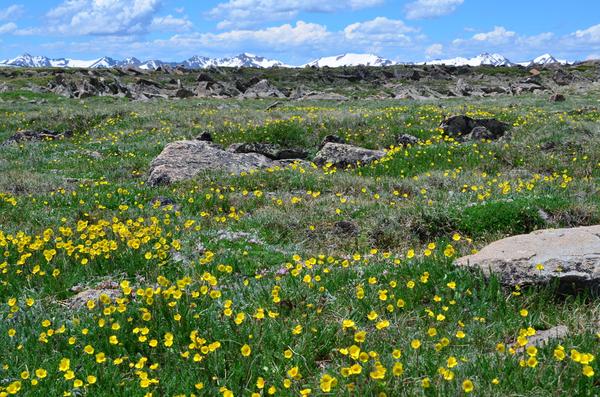
As if roaring waterfalls and adorable little critters weren’t enough to make springtime the crown jewel of Rocky Mountain, the rainbow blanket of wildflowers ought to seal the deal.
With a tiered spring season in the park, there is always something new blooming! The lower elevations may start to see wildflowers by early spring and it’s not until the summer months that the flowers make it up to the alpine tundra. Regardless of whether you arrive in April or June, there are bound to be some colorful valleys in your future!
Reminder: While it may be tempting to frolic through the wildflowers or pick a flower to give to a loved one, please remember to follow the Leave No Trace principles and stay on the trail. Damaging these flowers not only ruins the experience for the next visitor but it can have long-lasting negative effects on the environment.
Go For a Hike
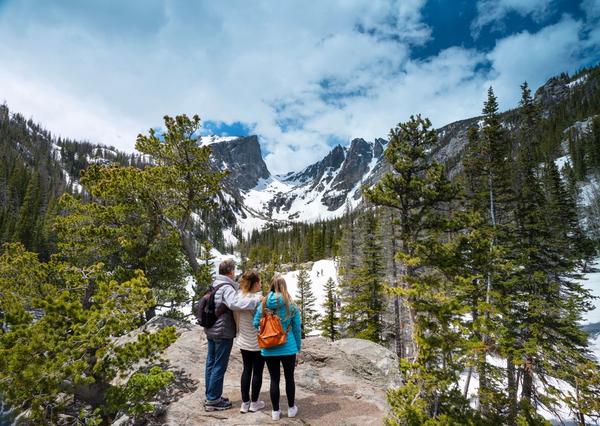
Spring hiking in Rocky Mountain National Park can mean a lot of things. You can be strapping on your snowshoes for a high-country adventure in the backcountry or rocking a t-shirt on a lower-elevation hiking trail.
The choice is yours! Just make sure to check trail conditions at the visitor center because that trail you were hoping for might be more snowed in than you think. But when in doubt, you can’t go wrong with these Rocky Mountain classics.
Sprague Lake
- Length: 0.8 miles
- Elevation: 36 feet
- Trail Map: https://www.alltrails.com/trail/us/colorado/sprague-lake-trail
After hibernating through the winter, Sprague Lake is a great easy hike to get you out and moving again. Plus, the lake is a great place to look for wildlife!
Beaver Meadows
- Length: 1.1 miles
- Elevation: 111 feet
- Trail Map: https://www.alltrails.com/trail/us/colorado/upper-beaver-meadows-trail
Wildflowers, prime wildlife viewing, and a jaw-dropping view of the one and only Longs Peak right from the trailhead. What more could you want?
Dream Lake
- Length: 2 miles
- Elevation: 459 feet
- Trail Map: https://www.alltrails.com/trail/us/colorado/dream-lake-trail
Once summer hits, Dream Lake is one of the busiest trails in the park, and for good reason! Enjoy a springtime hike filled with peaceful solitude, a string of picturesque lakes, and an unmatched view of the noteworthy Hallett Peak.
Looking for a longer hike? Add a fourth lake (Emerald Lake) for a 3.8-mile roundtrip hike that you’ll be talking about for years to come.
Attend a Spring Event at RMNP

Located on the east side of the park, Estes Park is one of those charming gateway towns that you picture yourself moving to. Give yourself an excuse to stay awhile by attending one of the town’s fun spring events!
- Bigfoot Days: April
- Duck Race Festival: May
- Memorial Day Weekend Art Festival: May
Spring into Your Next Vacation
Just a few hours from the Denver International Airport and with plenty of cozy vacation homes perfect for any type of spring weather, a springtime trip to Rocky Mountain National Park might just be your greatest idea yet!
Book your stay with Winter Park House today!